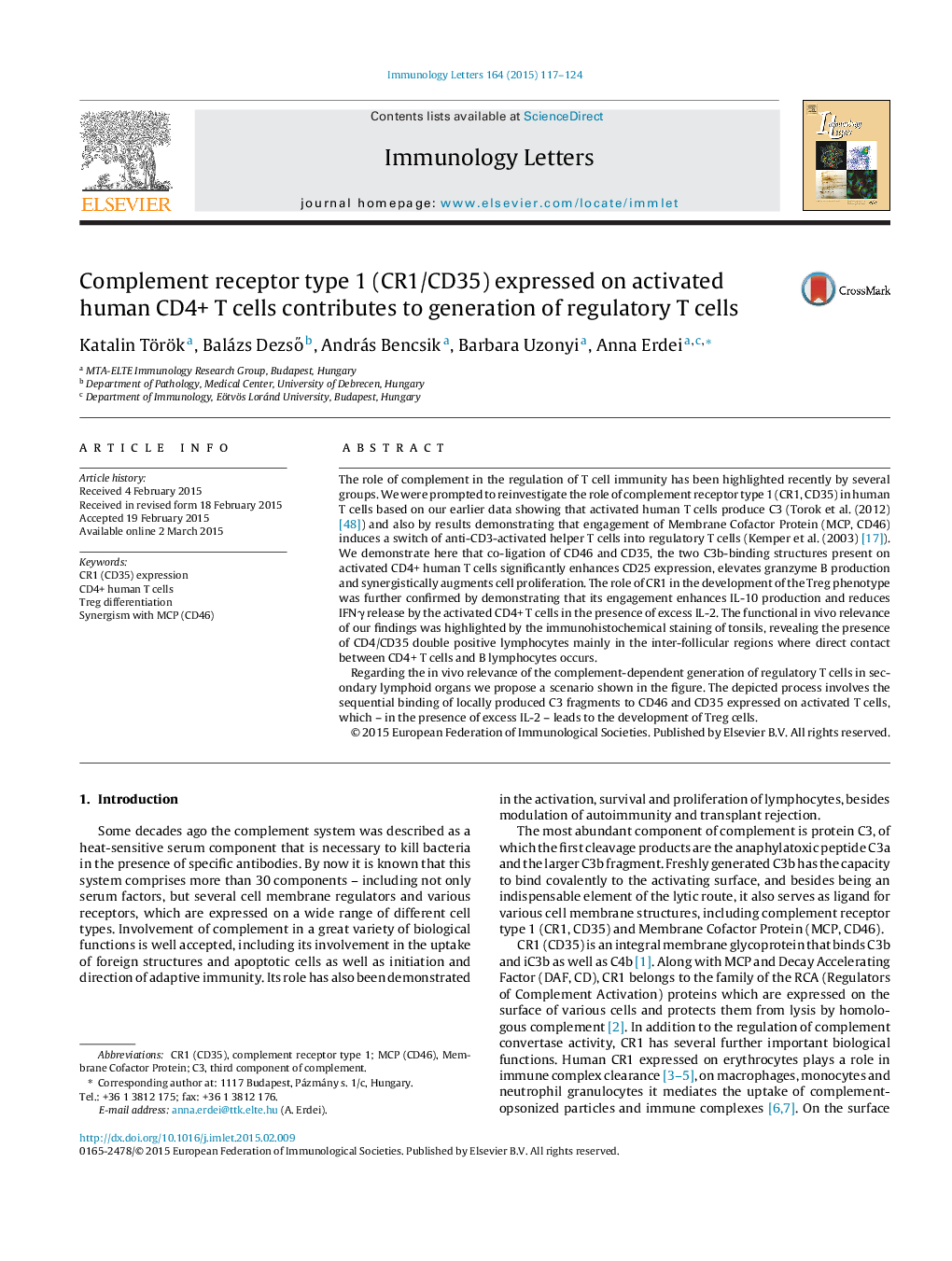| کد مقاله | کد نشریه | سال انتشار | مقاله انگلیسی | نسخه تمام متن |
|---|---|---|---|---|
| 3355346 | 1217169 | 2015 | 8 صفحه PDF | دانلود رایگان |

• Ligation of complement receptor type 1 (CR1/CD3) on activated human helper T cells contributes to generation of regulatory T cells.
• Co-ligation of Membrane Cofactor Protein (MCP, CD46) and CD3, the two C3b-binding structures significantly enhances CD2 expression and elevates granzyme B production.
• Simultaneous engagement of CD3 and CD46 synergistically augments Th cell proliferation.
• Engagement of CR1 enhances IL-10 production and reduces IFNγ release by the activated CD4+ T cells in the presence of excess IL-2.
• The functional in vivo relevance is highlighted by revealing the presence of CD4/CD3double positive lymphocytes mainly in the inter-follicular region of tonsils where direct contact between CD4+ T cells and B lymphocytes occurs.
The role of complement in the regulation of T cell immunity has been highlighted recently by several groups. We were prompted to reinvestigate the role of complement receptor type 1 (CR1, CD35) in human T cells based on our earlier data showing that activated human T cells produce C3 (Torok et al. (2012) [48]) and also by results demonstrating that engagement of Membrane Cofactor Protein (MCP, CD46) induces a switch of anti-CD3-activated helper T cells into regulatory T cells (Kemper et al. (2003) [17]). We demonstrate here that co-ligation of CD46 and CD35, the two C3b-binding structures present on activated CD4+ human T cells significantly enhances CD25 expression, elevates granzyme B production and synergistically augments cell proliferation. The role of CR1 in the development of the Treg phenotype was further confirmed by demonstrating that its engagement enhances IL-10 production and reduces IFNγ release by the activated CD4+ T cells in the presence of excess IL-2. The functional in vivo relevance of our findings was highlighted by the immunohistochemical staining of tonsils, revealing the presence of CD4/CD35 double positive lymphocytes mainly in the inter-follicular regions where direct contact between CD4+ T cells and B lymphocytes occurs.Regarding the in vivo relevance of the complement-dependent generation of regulatory T cells in secondary lymphoid organs we propose a scenario shown in the figure. The depicted process involves the sequential binding of locally produced C3 fragments to CD46 and CD35 expressed on activated T cells, which – in the presence of excess IL-2 – leads to the development of Treg cells.
Figure optionsDownload as PowerPoint slide
Journal: Immunology Letters - Volume 164, Issue 2, April 2015, Pages 117–124